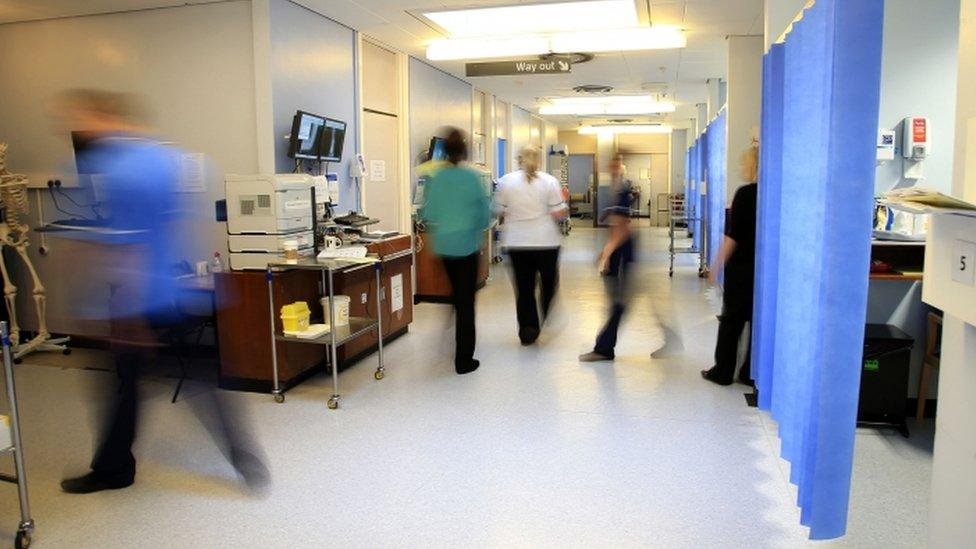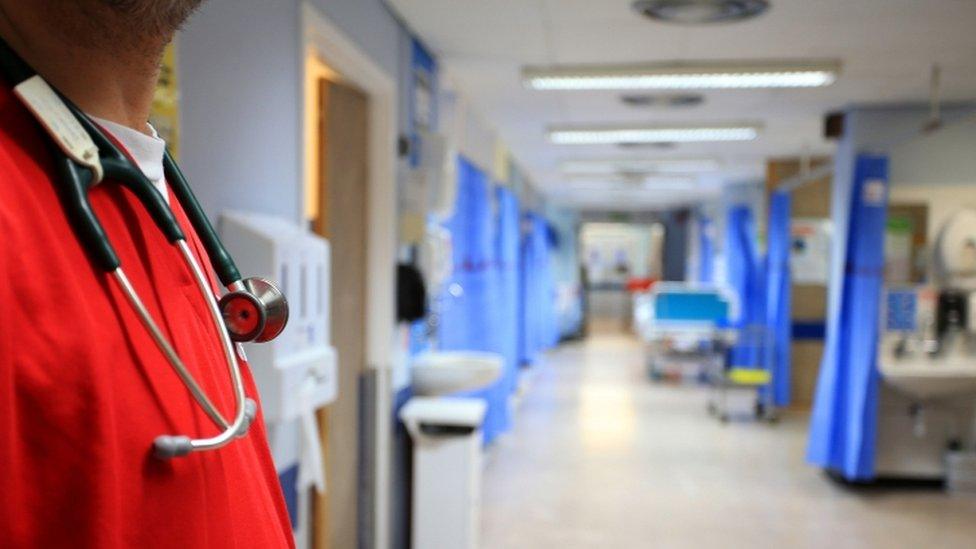Can the NHS cope better next year?
- Published

Will NHS patients be seen faster next year?
Health Secretary Jeremy Hunt has said delays in A&E must be overcome and extra money was announced in the Budget to help relieve pressure.
So what will happen next?
It is barely two months since Health Secretary Jeremy Hunt and NHS leaders were indicating that the key accident and emergency target could be changed.
The 95% benchmark for patients being treated or assessed in A&E within four hours might be refined, it was argued, to cover only urgent cases.
But now Mr Hunt has thrown his weight behind the existing 95% target and said it is essential for patient safety.
What is more he has demanded that the NHS hits the target by March 2018 and signalled to the service that this must now be the top priority.
That is a big ask with the latest performance figure in England coming in at only a little over 85%, the lowest since records began more than a decade earlier and some way short of Scotland's figure.
The 95% target has not been hit since the summer of 2015.
In effect, Mr Hunt is saying that with the Chancellor producing more money for the NHS and social care in the Budget, the hospital system must now respond and get back to hitting a target which patients understand.

The four-hour A&E target explained
It measures the point at which a patient arrives at A&E to when they are admitted, discharged or transferred elsewhere
It applies to all patients from those with life-threatening emergencies to minor ailments
Hospitals are meant to achieve the four-hour target in 95% of cases
The last time it was met was July 2015

So what of the extra health investment announced in the Budget?
The fascinating thing is that the money will be tightly controlled by the Department of Health rather than handed over to NHS England to dispense.
In 2017/18 there will be £100m of new funding to invest in facilities to reduce pressure on A&E, for example GP clinics near the front door of hospitals.
Trusts will have to apply to the Department with their plans and there will be a vetting process including the Treasury.
There will also be £325m over three years for local health Sustainability and Transformation Plans.
No extra cash
These extra investments in health will be treated as capital spending rather than revenue for running costs so the money can't be used for recruiting staff.
The Treasury won't allow a penny to be released until hospitals and area health chiefs have convinced officials of the merits of their projects.
There is, then, no extra cash for day-to-day hospital requirements and there have been warnings that a much bigger investment is needed to help hospitals move towards 95% performance levels in A&E.
NHS Providers, representing trusts in England, says getting back to the target within a year is unrealistic and that on projected funding levels maintaining performance will be difficult, let alone improving it.
The total of £425m of new investment spending over the next three years must be set against cuts of considerably greater magnitude this year.
Money was taken out of capital budgets to prop up hospital running costs.
Important things have happened in Budget week.
Jeremy Hunt and the Treasury have tried to take closer control of the NHS hospital network, frustrated perhaps at a perceived lack of progress by NHS England leaders.
But they have set themselves up to be judged on the performance of hospitals over the next year.
A failure to hit the 95% target by March 2018 will be laid at Mr Hunt's door and he won't be able to pass on responsibility to NHS England.
- Published9 March 2017

- Published9 February 2017
